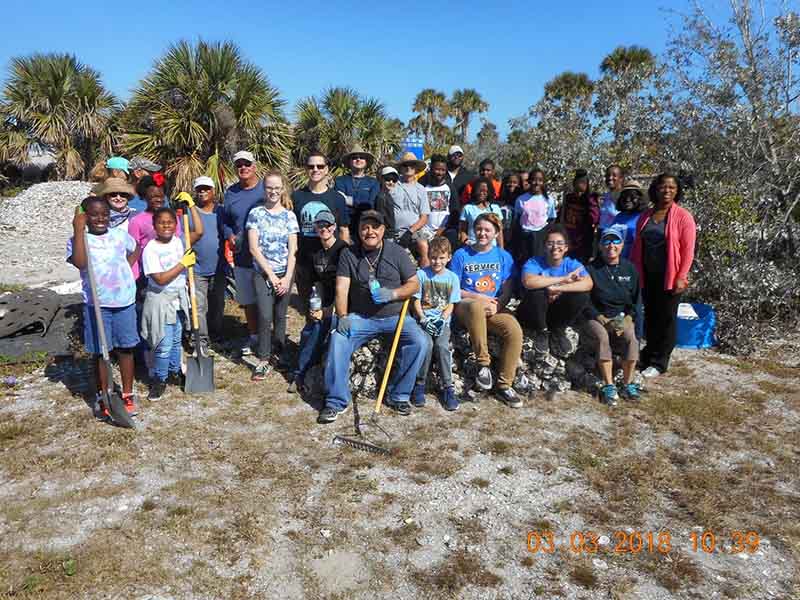
In early March, 41 volunteers created another 500 oyster reef modules in less than three hours. Jack and Jill of the Treasure Coast originally called for the bagging day and were joined by other groups, including volunteers from the Treasure Coast High School Key Club, Indian River State College Science Club, Palm Point Elementary School, and other non-affiliated volunteers. There are now more than 1,200 oyster reef modules ready for deployment at the Indian Hills Stormwater Treatment Area outfall.
Volunteers were joined by Florida Sea Grant Marine Extension Agent LeRoy Creswell who discussed the importance of oyster reefs on water quality and fish habitat. LeRoy had spawned many oysters while at Harbor Branch Oceanographic Institute and imparted much of his wisdom to the new oyster volunteers. LeRoy is one of the original members of the St. Lucie County Oyster Reef Restoration Program.
The new modules will be deployed at the Indian Hills STA Oyster Reef. Creation of this reef has been sponsored by Indian River Lagoon Council with deployment scheduled for late spring/summer of 2018. There are almost enough modules to create this reef in its entirety, but another bagging session will be held in April if there is interest. All interested groups are welcomed to request a bagging day.
This work was supported by:
- The Indian River State College Science Club, which prepared more than 700 bags for filling.
- Indian River Lagoon Solutions, which fabricated additional bagging materials (funnels and tubes) to accommodate the growing number of volunteers.
- The Lifestyle Building Group, which donated nine-inch PVC tubing necessary for creating the bagging tubes.
In another artificial reef development, the FWC has funded the Fishery Independent Assessment of Fish Communities Inhabiting St. Lucie County Mesophotic Artificial Reefs, which is being conducted by Florida Atlantic University at Harbor Branch Oceanographic Institute. Data collection on St. Lucie County deepwater artificial reefs has begun and videos from this study showing a wide number of organisms, including red snapper (Lutjanus campechanus), ocean triggerfish (Canthidermis sufflamen), groupers, tropical fish, sharks, and sea turtles can be seen at http://bit.ly/2ItFF1A.
The ability of the St. Lucie County Artificial Reef Program to work with other programs benefits fishing offshore St. Lucie County and other areas of Florida. The Coastal Conservation Association is staging a memorial reef to be deployed offshore Broward County from St. Lucie County’s Harbour Pointe Park. The Martin County Artificial Reef Committee is in talks with St. Lucie County to stage another Kerry Dillon memorial reef offshore Martin County. Kerry Dillon was a tireless worker for both the St. Lucie County and Martin County artificial reef programs and is sorely missed. The Palm Beach County Fishing Foundation is also working cooperatively with the St. Lucie County Artificial Reef Program to develop a new type of reef module known as the reef dart. These modules have the potential for making excellent baitfish reefs offshore St. Lucie County and are being pursued as a relatively inexpensive addition to the St. Lucie County Artificial Reef Program. Deployment of these modules can be seen at http://bit.ly/2IrBYti.
If interested in the St. Lucie County Artificial Reef Program or or oyster reefs in St. Lucie County, contact Jim Oppenborn, St. Lucie County Coastal Resources Coordinator at oppenbornj@stlucieco.org or (772) 462-1713.




